Hardy Fuchsia Societies Share Their Growing Tips For Getting The Most Out Of Your Plants

SHRUBS > FUCHSIA > HARDY

Ed is a horticultural therapist, professional gardener and writer. Ed has a BSc in Occupational Therapy from Coventry University and a Diploma in Social and Therapeutic Horticulture (DipSTH) via Thive, the RHS and Pershore College. Ed runs a community kitchen garden in West Sussex, where he leads horticultural therapy sessions.
Reviewed By COLIN SKELLY

Colin is a Horticulturist and Horticultural Consultant with experience in a range of practical and managerial roles across heritage, commercial and public horticulture. He holds the Royal Horticultural Society’s Master of Horticulture award and has a particular interest in horticultural ecology and naturalistic planting for habitat and climate resilience.
Contributions From GAIL BARBER

Gail Barber is the Secretary of the Sutton Coldfield Fuchsia & Gardening Guild with experience of more than 50 years in the garden. Gail even has a cultivar of Fuchsia named after her.

Terry is a member of the West Yorkshire Fuchsia & Pot Plant Society and has been growing fuchsias for a few years. He developed his passion for these plants over lockdown and in 2022, entered 5 of the 7 national fuchsia flower shows - including a 2nd place finish at the BFS National Championships.
Fuchsias are widely loved for their jewel-like pendant flowers which can bloom from mid-summer well into the autumn.
Contrasting tender fuchsia varieties, hardy fuchsias can not only survive a typical UK winter but bloom right up until the first frosts, often as late as November.
For this guide we reached out and interviewed:
- Gail Barber – Secretary of the Sutton Coldfield Fuchsia & Gardening Guild.
- Terry Sykes – Member of the West Yorkshire Fuchsia & Pot Plant Society.
“Fuchsias are such easy plants to propagate and grow”, says Gail, “but are also amazingly varied in their size, colour and capabilities”.
Hardy fuchsias are much tougher than half-hardy types and are usually able to withstand our low winter temperatures without too much protection.
Overview
| Botanical Name | Fuchsia |
| Common Name(s) | Hardy Fuchsia, Lady’s Eardrops |
| Plant Type | Perennial shrub |
| Native Area | South America |
| Hardiness Rating | H4 |
| Foliage | Semi-Evergreen or Deciduous |
| Flowers | Pendant-shaped flowers |
| When To Plant | May-June |
| When To Prune | March-April |
Sunlight
Preferred
Full Sun or Partial Shade
Exposure
Sheltered
Size
Height
0.5 – 4M
Spread
0.5 – 1.5M
Bloom Time
Summer / Autumn
Soil
Preferred
Most fertile soils
Moisture
Moist but well-drained
pH
Any
Fuchsias are part of the Onagraceae family of plants and are widely grown here in the UK.1A Systematic Revision of Fuchsia Sect. Quelusia (Onagraceae). (1989). JSTOR. Retrieved March 16, 2023, from https://www.jstor.org/stable/2399499
They originate from parts of Central and South America and are thought to have been introduced to Europe in the eighteenth century, according to records from Kew.2Fuchsia coccinea. (n.d.). Kew Royal Botanic Gardens. Retrieved March 16, 2023, from https://powo.science.kew.org/taxon/urn:lsid:ipni.org:names:277263-2

With their delicate flowers available in red, purple, pink and white they can brighten up any border or container, often flowering when other plants have finished for the year.
Hardy fuchsias can also be an important late source of pollen here in the UK and even attract hummingbirds in warmer climates.
“Hardy fuchsias are a must in any garden” says Gail.
“Super easy to care for and the knowledge that the display will get better year on year”.
Common Varieties
Hardy fuchsias are available in a wide range of sizes and shapes ranging from compact varieties perfect for pots and containers to large shrubs and even small trees better suited to the back of a border.
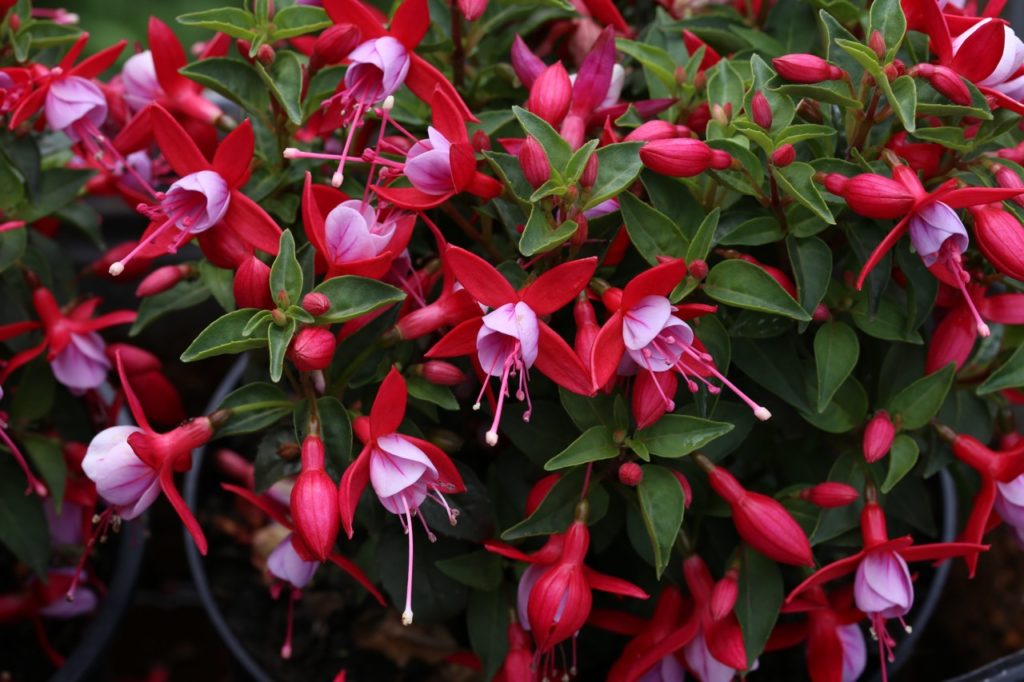
“There are literally thousands of fuchsias to choose from,” says Terry.
“There’s something for everyone. Triphyllas, with their bunches of blooms at the end of their stems, to the tiny encliandras, with their diminutive flowers.”
Some of Terry’s favourite hardy varieties include ‘Hawkshead’ (more below) and ‘Little Beauty’.
All the varieties listed below have been awarded the Royal Horticultural Society’s ‘Award of Garden Merit’ (AGM) signifying that they have proven to perform reliably well in the garden.
F. ‘Hawkshead’

‘Hawkshead’ is a bushy shrub with dark green foliage and stunning single white flowers.
Growing to an eventual size of 1m in height, it is ideal either for a border or a large container.
F. ‘Lady Boothby’

This variety is a vigorous and upright shrub that can grow to an impressive 4m tall.
With its typical red and purple flowers, it looks spectacular at the back of a border.
F. ‘Alice Hoffman’
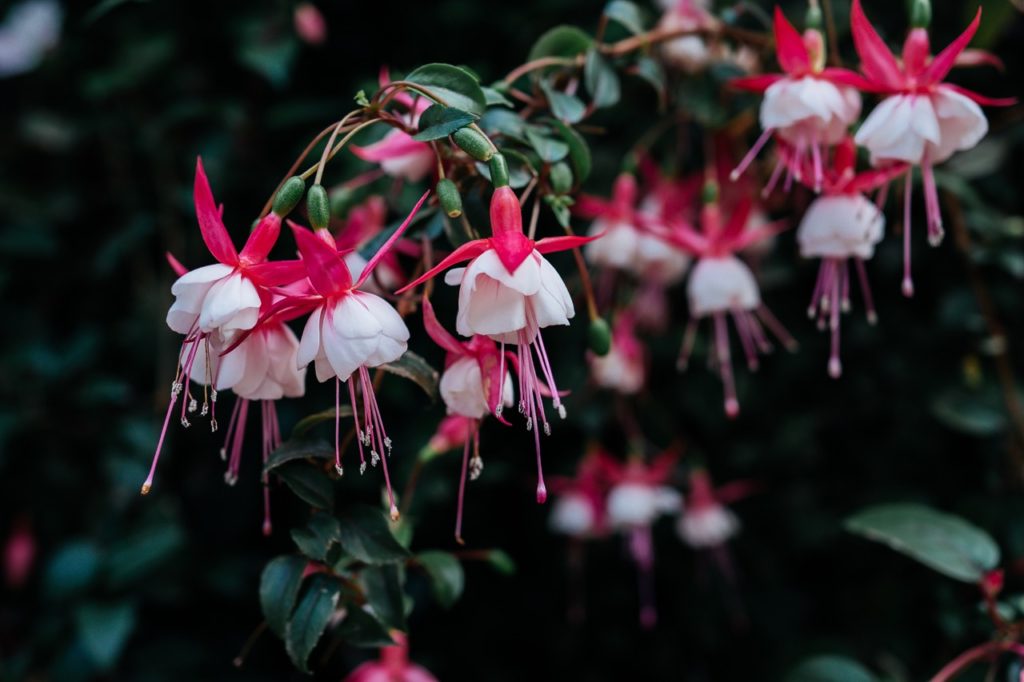
‘Alice Hoffman’ is a more ornate variety with its semi-double pink and white flowers.
Growing to only 50cm in height and spread, it is perfect for a pot or container or when grown near the front of a border where it can be seen and enjoyed.
F. ‘Whiteknights Pearl’
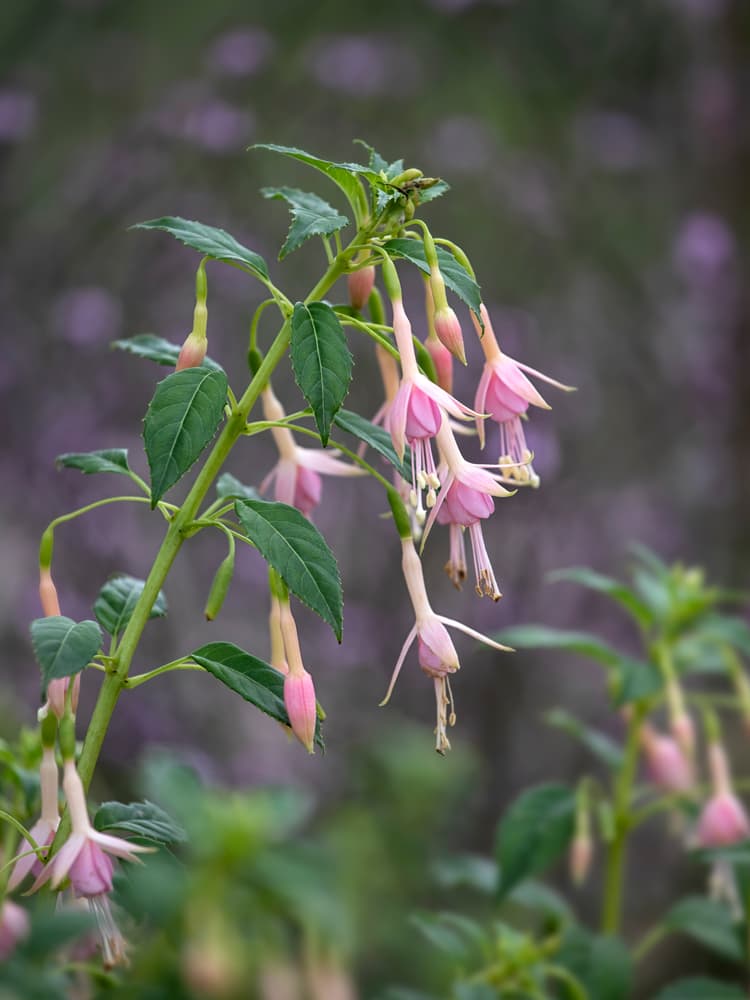
This variety is an elegant fuchsia displaying slender two-tone pink flowers which contrast against its dark green foliage.
Growing to a final size of 1.m tall and wide over time, it is best suited to a border.
Planting
Hardy fuchsias grow best when placed in either full sun or dappled shade.
However, they may struggle when planted in a scorching south-facing spot, so a little shade suits them well, as Gail explains:
“My own garden is very shady, getting very little sun even in the height of summer. Fuchsias grown both in pots and in the ground are more than happy with these conditions”.
Hardy fuchsias struggle when exposed to prevailing winds, so it is recommended to site them in a sheltered spot where the stunning flowers won’t be blown off.

Hardy fuchsias can be planted as an informal hedge that will not only provide a boundary but attract pollinators and provide summer and autumnal interest to the garden.
When & How To Plant
“If you buy a small plant, or obtain a cutting early in the year, grow it on, then plant it out in the garden in early summer”, advises Gail Barber.
“This gives the plant plenty of time to get its roots established before the weather turns cold”.
Be warned that hardy fuchsias tend to dislike being moved once planted, so it is worth trying to find the right spot the first time around.
If planting directly into the soil, dig a hole twice as wide as the root ball and at least as deep, if not a little deeper, as hardy fuchsias can be planted a little lower than normal.
“When planting, make a saucer shape in the soil, so that as you water it during its first season, the water will go where directed, and as the season progresses the soil will backfill”.
Add lots of well-rotted organic matter to the hole and place the plant 3-5cm deeper than it previously was in its pot.
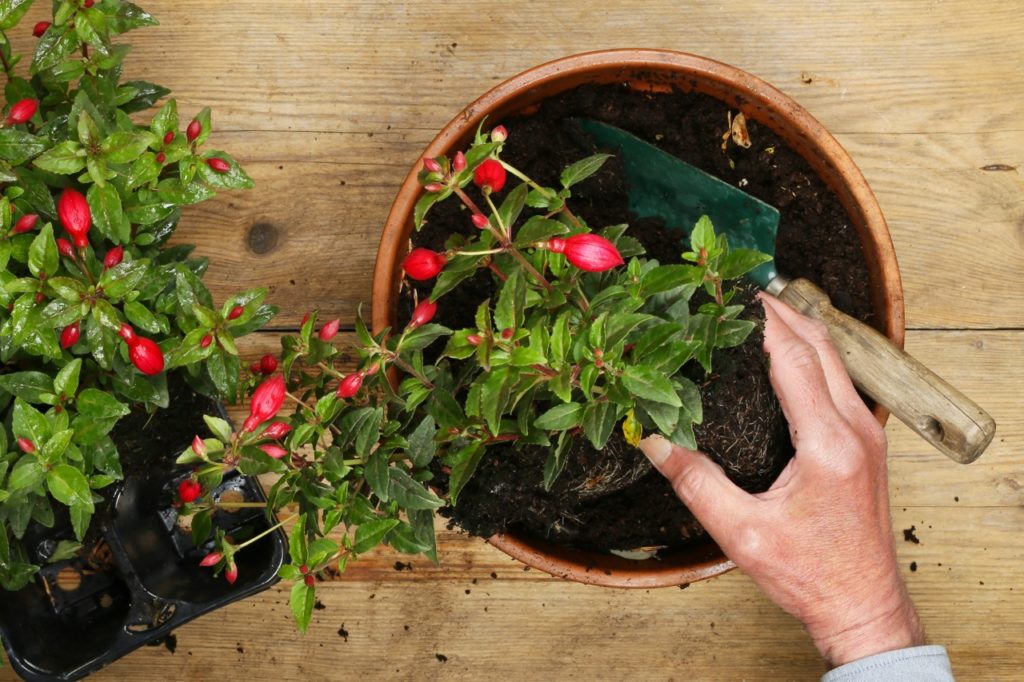
By planting a little deeper, the plant will have some protection over its crown and thus a better chance of surviving a harsh winter.
“Leave surrounding space open, this will slowly fill in during the summer,” says Terry.
“Water as required in the first season and feed with a general fertiliser. In the late Autumn cut back by around a third to tidy the plant up.”
Add a thick layer of mulch and water well until established, particularly during hot and dry spells.
If growing in a pot or container choose one a size bigger and ensure drainage holes are present for any excess water to drain away.
There is little need to plant deeply in a pot as they can simply be moved under cover if required.
Pot up using a general-purpose peat-free compost and water well.
Hardy Fuchsia Care
“The best tip to growing beautiful plants is to speak to other people who grow them”, says Gail.
“If you have a society in your area, go along and join in. Many groups have members with so much knowledge and experience who are more than willing share what they know”.
If you don’t have access to these kinds of groups, we’ve summarised the most crucial Fuchsia tips below.
Soil Conditions
When it comes to soil, hardy fuchsias are not too fussy and will cope with most types.
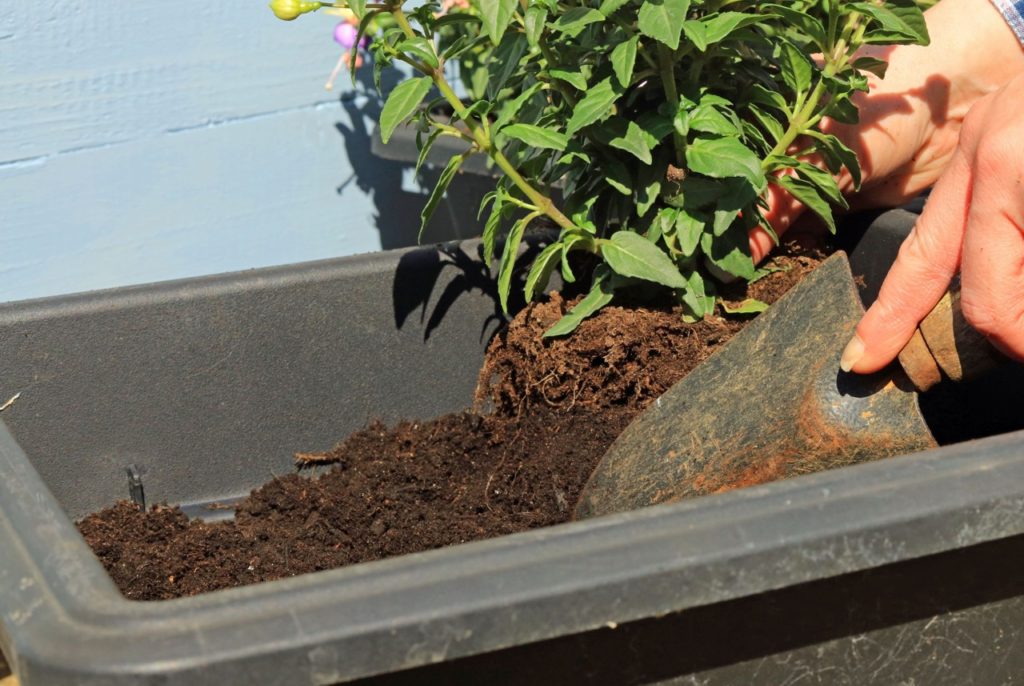
Nevertheless, they don’t do well in soil that becomes waterlogged or bone dry.
In general, any moist and fertile well-drained soil will suffice.
Light
Hardy fuchsias can be rather particular about the amount of light they receive.
They do well in full sun, yet do not like to be left exposed to the burning midday sun during the summer months.
Most varieties will put up with some shade, as long as it is not too overshadowed which may reduce flowering, but any partial or dappled shade is ideal.
Watering
Hardy fuchsias require a moist soil and do not like to be allowed to dry out.
This is especially true when grown in containers as these will require more frequent watering over the summer.
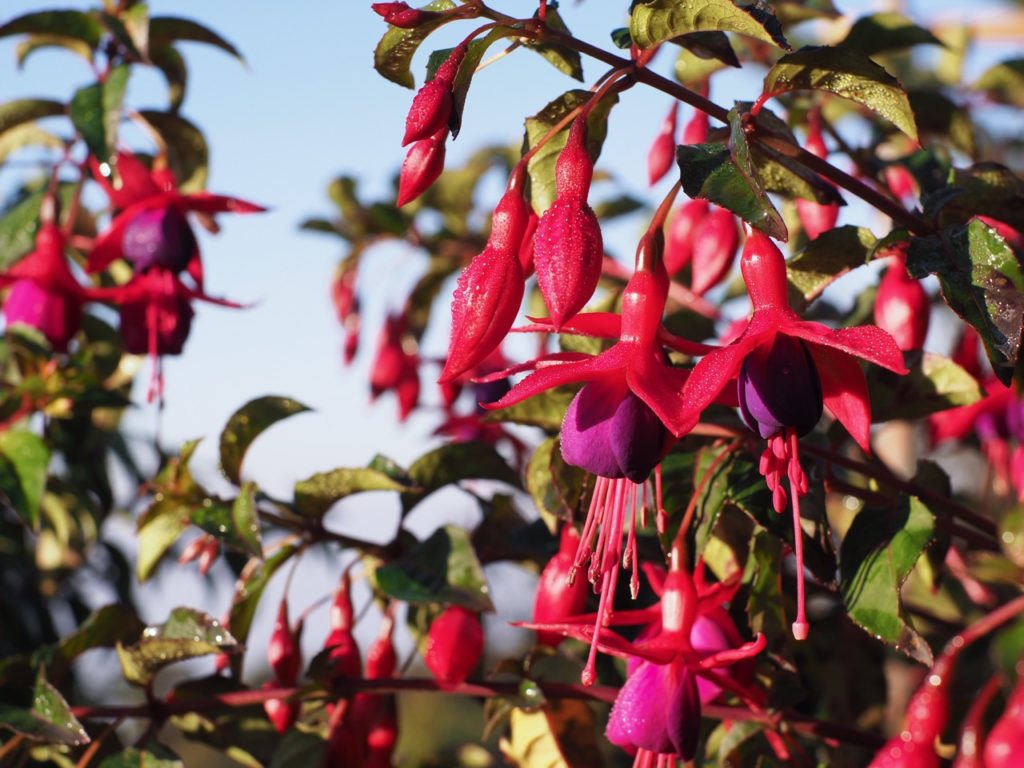
“When you take your watering can out in the summer, if the water runs off the surface of the soil, it’s not getting to the plants roots”, offers Gail.
“Dig in organic matter, well-rotted manure and mulch the soil’s surface to keep in the moisture”.
Terry has an alternative tip to check the moisture levels of your plants:
“You can buy a moisture probe to insert into the compost to give you an idea if the plant needs watering.
“With smaller pots, a good idea is to lift the pot to see if weight tells you if watering is required.”
Remember that fuchsia does not like waterlogged soil either.
So, if planting into heavy soil, gravel, horticultural grit or organic matter can be used to improve the drainage prior to planting.
Temperature & Humidity
Hardy fuchsias are specified as H4 on the RHS hardiness rating scale.
Essentially, this means that they are usually able to withstand temperatures down to -5-10°C.
“I live in the southwest of the country and although we occasionally get winter temperatures down to -5°C, this is not enough to damage hardy fuchsias,” shares Master Horticulturist Colin Skelly.
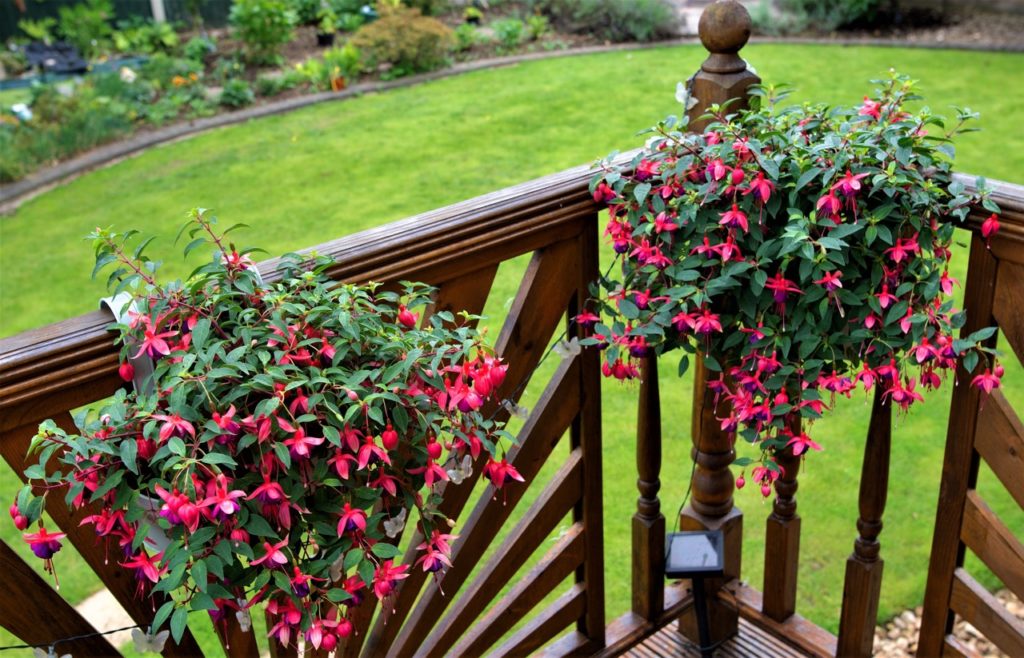
“Most coastal regions of western and southern UK should be able to grow fuchsias with only occasional winter damage.
“Elsewhere, it would be best to grow in containers or at least to take annual insurance cuttings.”
In the south and west of the country, this tends to imply that they will survive a typical winter without any protection.
However, in the north of the country or in frost pockets, plants may need to be moved out of the worst of the weather or covered with fleece to provide extra protection.
If growing hardy fuchsias as half-standards, it is advisable to either move these out of the worst of the winter weather or to protect them with fleece as their bare stems are said to be particularly susceptible to frost damage.
Fertilising
Preferring fertile soil, hardy fuchsias will benefit from some extra nutrients.
If grown directly in the ground it is advisable to feed annually in spring as new growth emerges with a balanced fertiliser.
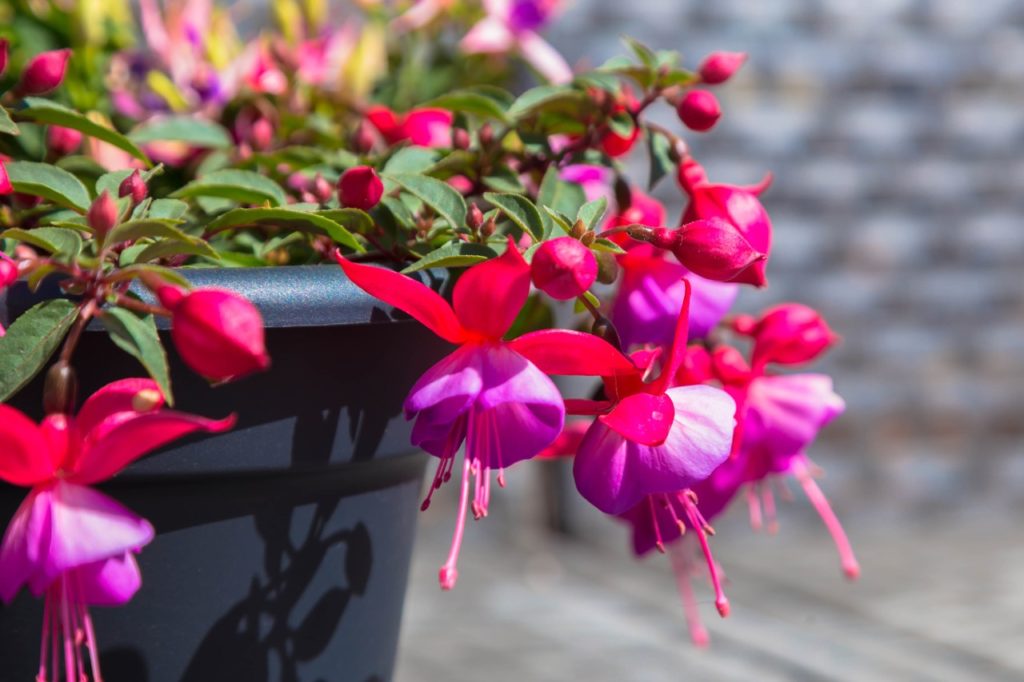
If grown in a pot or container a high-potash liquid feed, such as a tomato fertiliser, can be applied throughout the flowering season to encourage more blooms.
“In large outside pots, slow-release fertiliser is a good answer to feeding,” says Terry.
Supporting
Depending on the variety grown, metal, bamboo, wooden stakes or trellis supports may be required.
When grown as a climber, fuchsias will require some training and tying in and as a standard, some staking.
Pruning
Fuchsias should be pruned either in autumn or in spring as new growth emerges.
However, it is recommended to leave some growth on the plant to add some winter protection and to prune in spring, especially in colder parts of the country, as Gail shares:
“When the winter kills off the top growth of your Fuchsias, leave the plants well alone until the end of March. This is when it can be given a good cutback”.
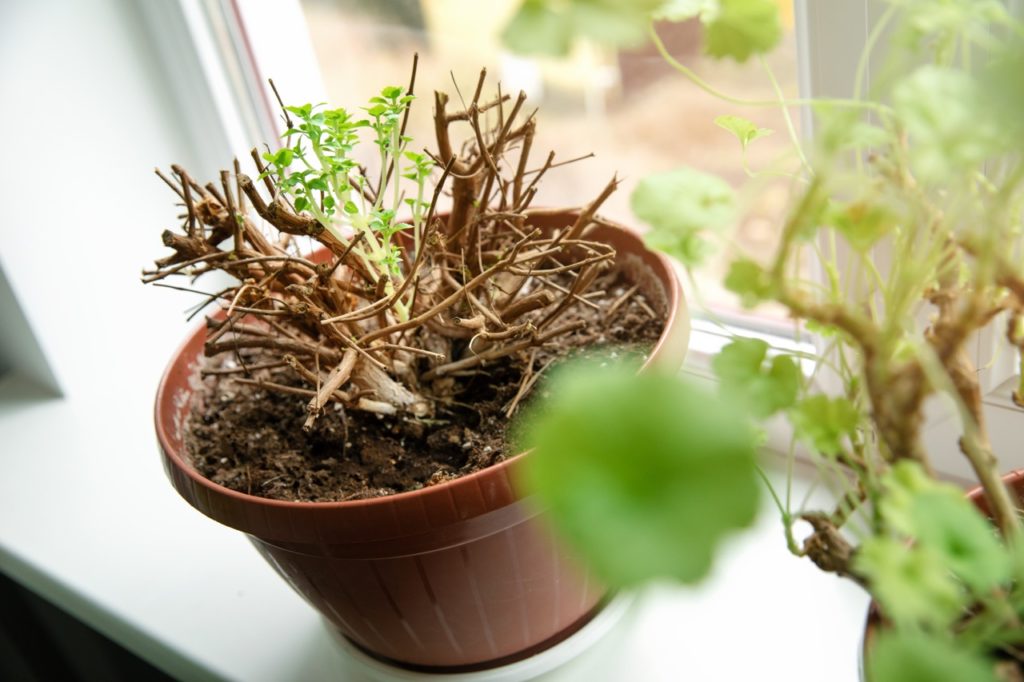
To prune, using a pair of clean and sharp secateurs or loppers, remove any dead or long growth back to a new shoot or bud.
In colder parts of the country, when all top growth has died back, it may be necessary to cut down the plant to soil level, after which new growth will sprout from the base of the plant.
Pests
“Keep an eye out for Fuchsia Gall mite, especially in the south of England,” warns Terry.
“Cut out any affected tips, then place them into bags and bin them. Do not put them in your gardening waste bin or compost heap.”
Propagating
Due to their vulnerability to a harsh winter, it can be wise to take cuttings in autumn as backup replacements.
Thankfully fuchsias are one of the easiest shrubs to propagate and readily take from hardwood cuttings.
In autumn, take 10-15cm length cuttings of hardwood, which is brown rather than green.
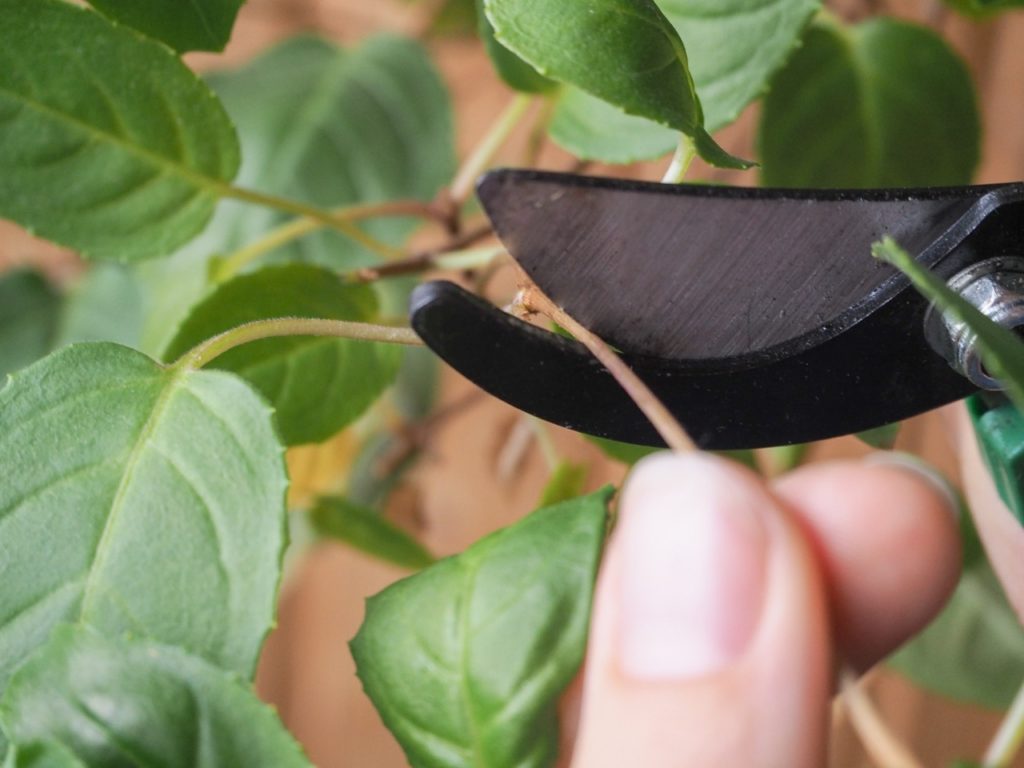
Make a square cut at the base of the cutting just below a leaf joint and place it in a pot of free-draining compost so half the cutting is covered by soil.
Water well and place in a frost-free environment such as a cold frame or unheated greenhouse, keeping the soil moist.
When new growth appears in spring, pot on and harden off before planting out in early summer.
Companion Planting
Where your hardy fuchsia is planted will decide on what other plants can be planted alongside, but presuming a partially shaded site, companion plants could include crocosmia, hardy geraniums and other fuchsias.
“Spring bulbs give good colour to your fuchsia bed before it comes into life,” says Terry.
Keeping Fuchsia Flowering
Hardy fuchsias can bloom from mid-summer well into the autumn until the first frosts arrive.
A healthy plant in the right spot and in moist, but well-drained and fertile soil should bloom pretty much continuously.
However, periods of stress, such as very hot weather or drought may decrease the number of blooms.
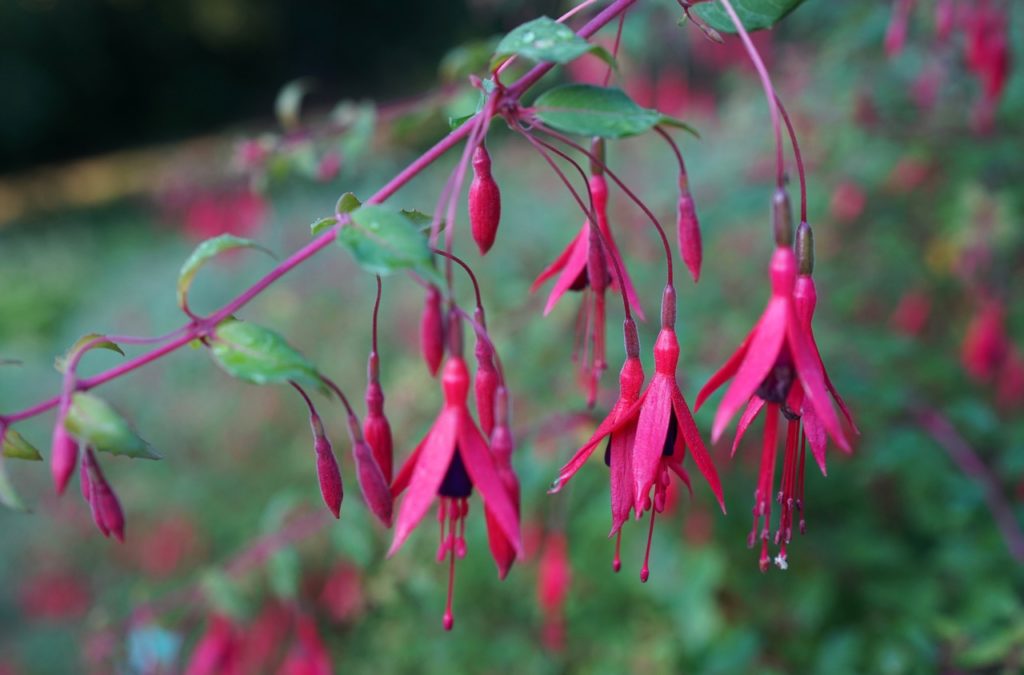
“Fuchsias, along with many plants, will always benefit from good soil. Enrich your garden soil at every opportunity, ensuring that the soil will retain moisture but be well drained”.
Keep plants watered, especially if newly planted, and apply a regular high-potash liquid feed during the flowering season to those plants grown in pots.
“Feeding your plants regularly will encourage flowers and healthy growth throughout the year” Gail argues.
For those grown in a border, a balanced fertiliser applied every spring should help encourage blooms for months on end.
References
- 1A Systematic Revision of Fuchsia Sect. Quelusia (Onagraceae). (1989). JSTOR. Retrieved March 16, 2023, from https://www.jstor.org/stable/2399499
- 2Fuchsia coccinea. (n.d.). Kew Royal Botanic Gardens. Retrieved March 16, 2023, from https://powo.science.kew.org/taxon/urn:lsid:ipni.org:names:277263-2
